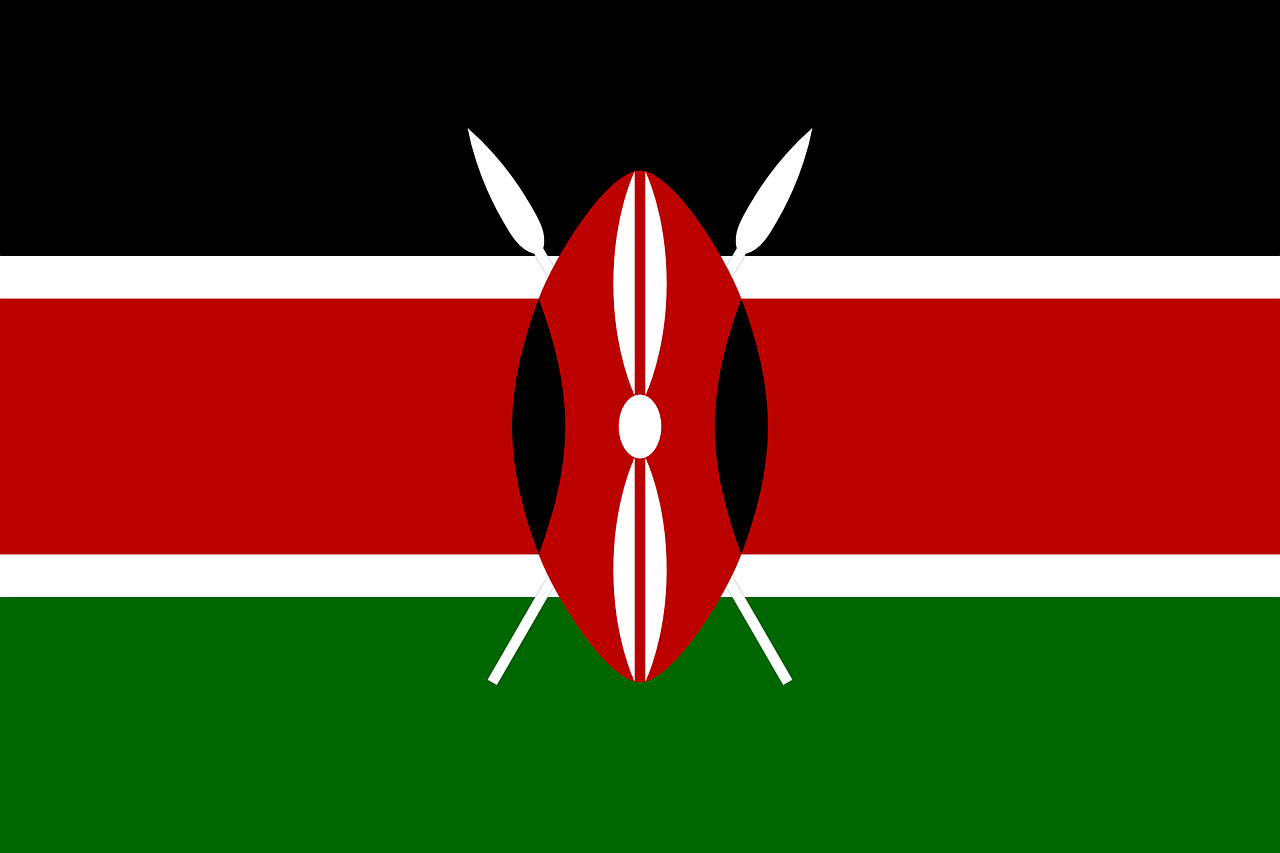What’s Keeping Women Out of Data Science?
- 04 Apr 2023
- 11 min read

Today, women account for only 20% of all data science professionals. This gender gap exists for several reasons, including pay disparities, limited career growth opportunities, inadequate access to training programmes, and a male-dominated office culture. In this article, we will delve into these issues and explore how ALX is committed to providing women with the necessary tools and resources to excel, thrive and lead in their Data Science careers.
In today’s digitised world, data science is not only unavoidable but extremely important for all of us. Over the course of the next decade, it is predicted to develop faster than any other field, as businesses rely more heavily on data to make informed decisions across all their operations. Through the power of data science, businesses across many industries can become more efficient and sustainable, which is critical in today's competitive marketplace.
For example, the healthcare industry uses big data to identify and predict diseases and to personalise healthcare recommendations for individual patients. Similarly, e-commerce companies use data to automate “smart” ad placement and personalise product recommendations. The transport industry also uses data to optimise shipping routes and to model the most efficient traffic routes and streetlights.
Soon enough, no industry will be able to exist without a reliance on data. As a result, data professionals are in high demand across all industries – especially those with skills in data science.
The Gender Data Gap
Data scientists are all around us. Broadly speaking, a data scientist develops algorithms and predictive models that automate tasks and analyse data to inform business decisions. Whether intentional or not, data scientists inevitably bring their own values, interests, and life experience to their data analysis. This, in turn, shapes outcomes according to their particular world views.
Currently, women represent only 15-22% of all data science professionals, according to surveys from WEF, Global Gender Gap Report, and BCG research. Another study, conducted by Bob Hayes of Business Over Broadway, found that one in four data scientists is a woman, and women hold only 26% of all data professional positions. According to Girls Who Code, although 57% of all bachelor’s degrees are earned by women, only 12% of them are in computer science.
As you can see, there is a severe lack of women's voices in the data science field in general. This leads to a problem known as the Gender Data Gap, where the underrepresentation of women in data-related fields results in many business and social decisions being made without their input. This lack of representation not only harms women, but also limits the diversity of ideas and perspectives that are essential for advancing the field of data science. We must address this issue and work towards a more inclusive industry.
Why Diversity is Important in Data Science

In general, diversity brings new perspectives and ideas into fields that, for too long, have been dominated by singular narratives and ideologies. By hearing a variety of voices, teams with diverse backgrounds, life experiences, and expertise are able to come up with innovative solutions that are more universal and inclusive. This leads to more efficiency, better outcomes, and ultimately, increased profitability.
More specifically, racial and gender diversity are often linked to increased sales revenue and market share. Studies from McKinsey and Lean-In have found that companies with higher gender representation are 25% more likely to perform better financially. That’s huge! Better performance is also often linked to a diverse company’s willingness to experiment, be creative, and share knowledge, compared to a less diverse company.
“It’s important to have more women in tech because they bring valuable problem-solving skills and research abilities that can benefit the industry. By nature, women tend to be excellent problem solvers and researchers, which makes them well-suited for the fast-paced and constantly evolving tech field.”
- Faith Okoth
In the field of data science, diverse teams can equally give companies a competitive edge. The insights, products and decisions they inform will be of improved quality simply because of the various perspectives that are considered. In fact, diversity can be said to be even more crucial in data science to ensure that the results that are reported are unbiased.
These immediate and long-term benefits of diversity in data science are being missed out on because there are a number of barriers that prevent the entry and retention of women in the field. By understanding these barriers, we can work towards breaking them down and preventing them from being built up again.
Barriers Women Encounter in Data Science
Of the many factors that contribute to the lack of gender diversity in the data science industry, one of the primary ones is the systemic bias and discrimination that women face in science, technology, engineering, and mathematics (STEM) fields overall. This bias manifests itself in many ways, from the subtle gendered micro-aggressions that women experience daily to the more overt forms of discrimination that are common in hiring and promotion decisions. Because of these factors, women tend to find themselves discouraged from pursuing careers in data science. Below we take a deep-dive into some of the barriers to entry that women face in data science.
The gender pay gap

The gender pay gap refers to the reality that women in the workforce are paid less than men in equivalent positions. In the United States, for example, women make an average of 82% less than men in the same role. Over the last 20 years, the gap has remained relatively stable, leaving a profound impact on women's financial security and career prospects.
There has been some controversy as to where the gender pay gap originates. Some think it is because employers simply treat women differently than men. Others think it comes from how people balance work and family. Regardless of the underlying reason, the gender pay gap exists.
In data science, women are routinely paid less than men for the same work. The gender pay gap in data science is about 32%, meaning the average woman is paid a third less than the average man. In 2017, that figure was only 13%, meaning the pay gap is worsening over time. When women are paid less than men for the same work, especially to this degree, it discourages them from seeking out careers in data science. Why work so hard for a third of the pay? Clearly, this must change.
Poor career growth projections
Though there are increasing numbers of women entering the data science workforce every year, they are sorely underrepresented in leadership positions all around.
A study out of MIT found that, while women generally receive better performance ratings than men, they receive lower potential ratings than men do. A potential rating is used by a manager to determine an employee’s potential for growth or career advancement in an organisation. Despite better performance, women are promoted less frequently than their male counterparts. Because they are not offered the same opportunities for growth as men, women are often discouraged from trying at all.
A solution to this is to create more inclusive workplace cultures, first and foremost. Mentorship and sponsorship opportunities can also help to ensure that women have access to the same tools and resources that men have in order to level the playing field too.
Male-dominated office culture

Women in STEM often face a workplace culture that is dominated by men, where their ideas and contributions go unnoticed or are undervalued. This leads to feelings of isolation and frustration, as it becomes difficult to advance your career when you are unseen or unheard. The male-dominated culture in data science also leads to subtle forms of discrimination, including gender bias in hiring and promotion decisions made by managers.
A big part of this problem is the preconceived stereotypes we associate with STEM jobs. We often conflate male qualities with those suitable for tech and data jobs. This makes it hard for employers and co-workers to imagine women in those roles and create workplace cultures that include them.
If we could redefine work culture outside the male gaze, it might encourage more women to join a male-dominated field like data science. At the end of the day, we should be working towards a culture that ensures women have access to the same career nurturing opportunities as men.
Lack of access to mentorship or training programmes
Women who are interested in pursuing a career in data science often aren’t afforded the same access to resources or the support they need to succeed as men are. Without access to mentorship or training programmes, they miss out on networking and other valuable opportunities to develop their technical and leadership skills, hindering their ability to advance their careers.
Training programmes like those offered through ALX take into account all of the limiting factors that might hold women back from entering a career in data science, and career accelerator communities, such as The ROOM Fellowship, provide ongoing professional development and support.
Gender bias in recruiting

Women who apply for data science positions are often subject to subtle (and not-so-subtle) forms of discrimination, like gender bias in the recruitment process. Often, hiring managers have an ideal candidate in their head that comes from specific male characteristics. This crops up in everything from job descriptions to screening criteria and interview questions, which often perpetuate gender stereotypes in a negative way.
As a result, women less often apply for positions in data science that they are qualified for, and even worse, are overlooked for opportunities that they are more than qualified for. This all comes down to male-dominated ways of thought that permeate into the workplace.
A way around this would be to use gender-neutral job descriptions and screening criteria to give everyone a fair shot. It’s also important that hiring managers undergo implicit bias training and make sure that their interview questions are fair and inclusive. This can hopefully help to address the lack of diversity in the data science applicant pool.
ALX Bridges the Gap: Creating Access for Women in Data Science and Beyond
To create a more equitable and inclusive workplace, it is important that we address the systemic biases and discrimination that contribute to the lack of gender diversity in data science.
ALX is doing its part to help close the gender gap in STEM by providing platforms designed by and for women to help them excel, thrive and lead in their chosen careers. According to Faith Okoth, a technical mentor at ALX, “It’s important to have more women in tech because they bring valuable problem-solving skills and research abilities that can benefit the industry. By nature, women tend to be excellent problem solvers and researchers, which makes them well-suited for the fast-paced and constantly evolving tech field.”

While it is impossible to force the whole industry to create more inclusive workplace cultures, or create equitable access for women, we can start small. At ALX, we champion the women who are driving innovation and devising solutions for the world of tomorrow, and are intentional about increasing their visibility as role models for our learners. Through our sponsored training programmes, we increase the access of all tech enthusiasts – especially women – to a fruitful career in tech.
ALX is committed to bridging the digital gender gap and increasing the representation of women in tech. Our goal is to empower the leaders of tomorrow, and place women and men at the forefront of Africa's Tech Revolution. We offer a range of programs, including our ALX Data Science programme, to help achieve this goal. Enrol now to learn more about how we're working towards gender equality in tech.
FAQs
What is the gender breakdown in the data science field?
When taken apart by gender, 20.4% of all data scientists are women, while 79.6% are men. This represents a huge disparity between the two genders and is something that needs to be addressed.
What is the Gender Data Gap?
Most decisions based on data are collected based on data concerning only men. For example, male bodies are overrepresented in medical textbooks. The lack of data collected solely about and for women is referred to as the Gender Data Gap.
What are the consequences of the Gender Data Gap?
When research and data collection is male-focused, it leaves room for important discoveries unique to a woman’s experience to be missed. This has implications for how women are treated in healthcare, how their safety is handled in society, and what kind of resources they have access to.
 Ghana
Ghana  Ethiopia
Ethiopia  Egypt
Egypt  Morocco
Morocco  South Africa
South Africa  Rwanda
Rwanda  Nigeria
Nigeria  Kenya
Kenya 